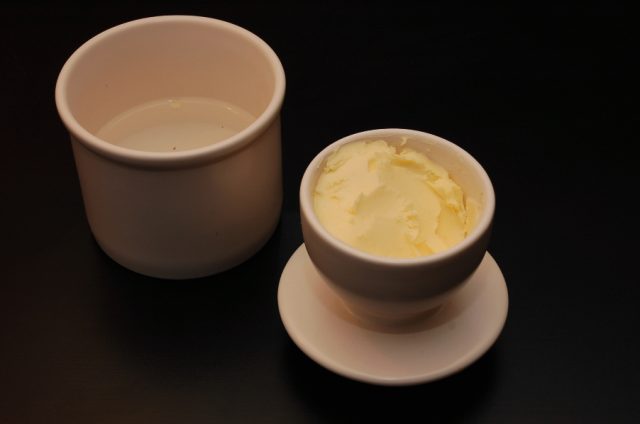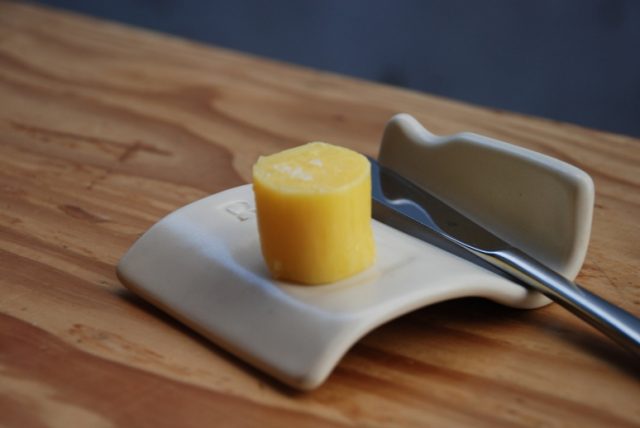Butter bell: a favourite kitchen amenity

There is little else better than slathering good, fresh butter on good, fresh bread. It is its essentiality, its long, long historical reach back into humankind’s relationship with food which we enact each time we apply knife to butter.
Butter is roughly 80 percent milk fat and 15 percent or so water. If my math is worth anything, that means there’s five percent left kicking around for various proteins, lactose and salts. French butter must be at least 82 percent fat and has less water, which is often why a croissant from Paris, France, is likely quite different in terms of flakiness than a croissant from Paris, Ontario.
For room temperature butter
The butter you plunk into your cart on your weekly route through the grocery store is either salted or unsalted. Salted butter can have up to two percent added salt in the pound; it acts as a preservative and antimicrobial. This is the reason why salted butter can sit out on the counter—at a useful room temperature—a bit longer than unsalted butter.
I’d prefer to use the unsalted version, and I don’t like keeping one of my favourite ingredients in the fridge but butter—especially unsalted butter—goes rancid when not kept cold. Exposure to the air and sunlight harms butter and disrupts those cute little fat molecules, breaking them down in a stinky kind of way.

So how does one spread fridge-cold unsalted butter on that hearty rye, tangy sourdough or luscious epi bread without ripping the crumb mercilessly? Well, I’ve taken to using what I’ve discovered is called a French butter dish, a quite boring moniker which sounds poetically much better as its “Butter Bell” trademarked name.
Ding dong: it has proven to be a good answer to the question of whither butter: unusable in the dairy compartment or rancid on the counter?
Beurrier à l’eau
Butter has been around for as long as humans have been in the dairy business, but the butter crock contraption is thought to have originated in France in the late-1800s. A town by the name of Vallauris in southeastern France takes credit for its birth, while Brittany and Normandy butter aficionados make the same claim. It is called variously a butter crock, a butter keeper, pot a beurre or beurrier à l’eau.
Its simple ingenuity works like this: the bottom chamber is partially filled with fresh water to about a third of its capacity. (You can call me a bit precious, but I guess using “good” water would be important too.)
The second chamber of my butter keeper is shaped something like half of a very large egg with enough room to stuff into it one stick of butter (what is that, about one-half cup?). You pack this chamber very tightly so that there are no gaps and buttery crevasses for air to seep in and do molecular damage.
Make an airtight seal
Now, this is the cool part (if you are food geek like me): the top chamber is then turned upside down and submerged into the water that sits in the second chamber base. It’s a truly brilliant hydro-mechanical invention in a bells-and-whistles-age of immersion circulators and molecular gastronomic wizardry.
The water acts as an airtight seal that keeps the evil oxygen and devilish sunlight away from the butter, so you can store it at room temperature for up to a month with regular water changings every few days (all bets are off, however, if you keep your kitchen hot).
When you need some of what Irish writer Seamus Heaney called “coagulated sunlight,” simply lift the lid, let the water drip a little bit, dip in your knife and spread butter to your heart’s saturated fat content.

